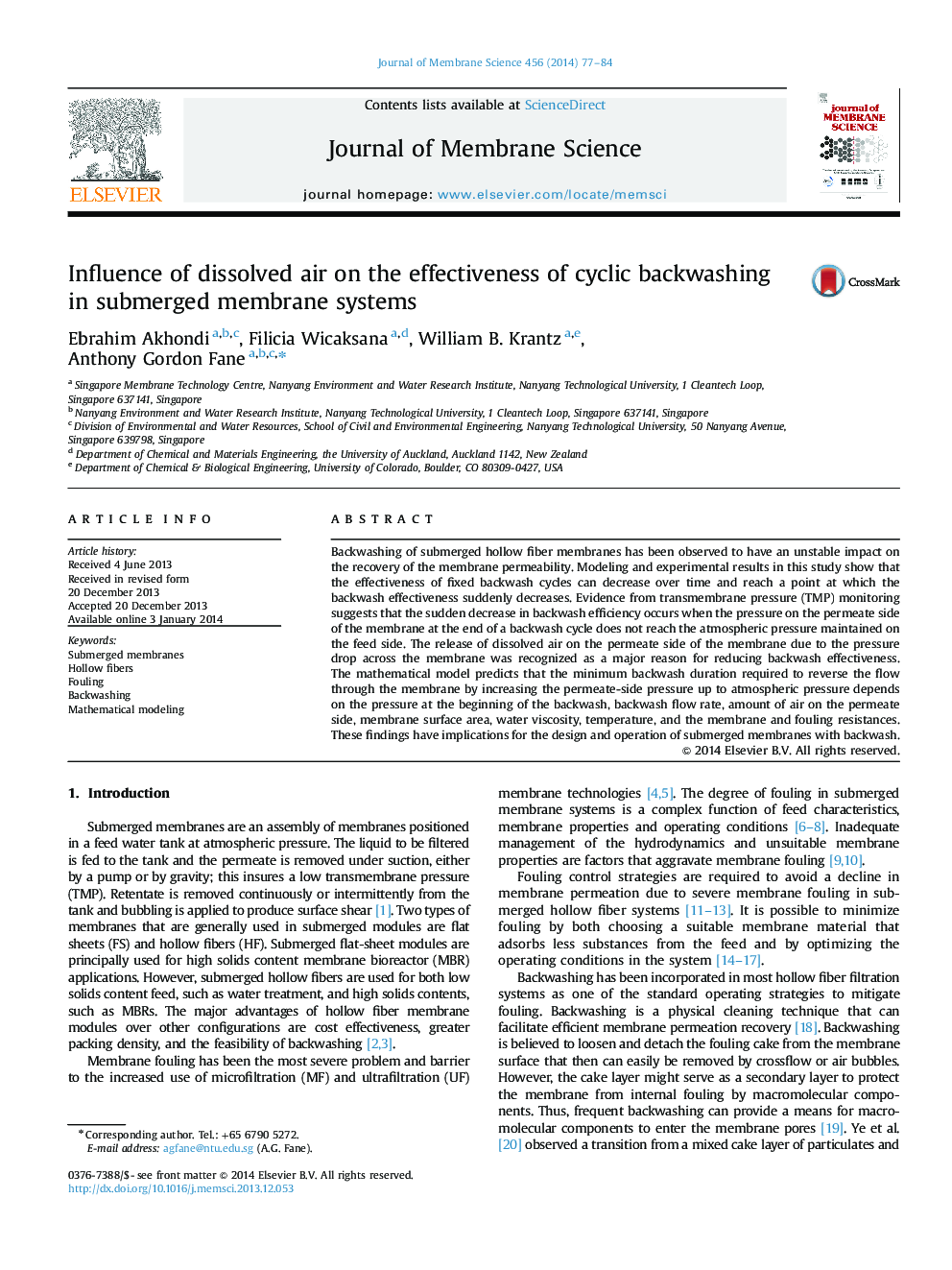| Article ID | Journal | Published Year | Pages | File Type |
|---|---|---|---|---|
| 633744 | Journal of Membrane Science | 2014 | 8 Pages |
•Effectiveness of fixed backwash duration can decrease over time for submerged membranes.•Release of dissolved air on the permeate side can reduce backwash effectiveness.•A mathematical model was developed to describe the effects of trapped air.•Model predictions are qualitatively validated by experiments with submerged hollow fibers.
Backwashing of submerged hollow fiber membranes has been observed to have an unstable impact on the recovery of the membrane permeability. Modeling and experimental results in this study show that the effectiveness of fixed backwash cycles can decrease over time and reach a point at which the backwash effectiveness suddenly decreases. Evidence from transmembrane pressure (TMP) monitoring suggests that the sudden decrease in backwash efficiency occurs when the pressure on the permeate side of the membrane at the end of a backwash cycle does not reach the atmospheric pressure maintained on the feed side. The release of dissolved air on the permeate side of the membrane due to the pressure drop across the membrane was recognized as a major reason for reducing backwash effectiveness. The mathematical model predicts that the minimum backwash duration required to reverse the flow through the membrane by increasing the permeate-side pressure up to atmospheric pressure depends on the pressure at the beginning of the backwash, backwash flow rate, amount of air on the permeate side, membrane surface area, water viscosity, temperature, and the membrane and fouling resistances. These findings have implications for the design and operation of submerged membranes with backwash.
